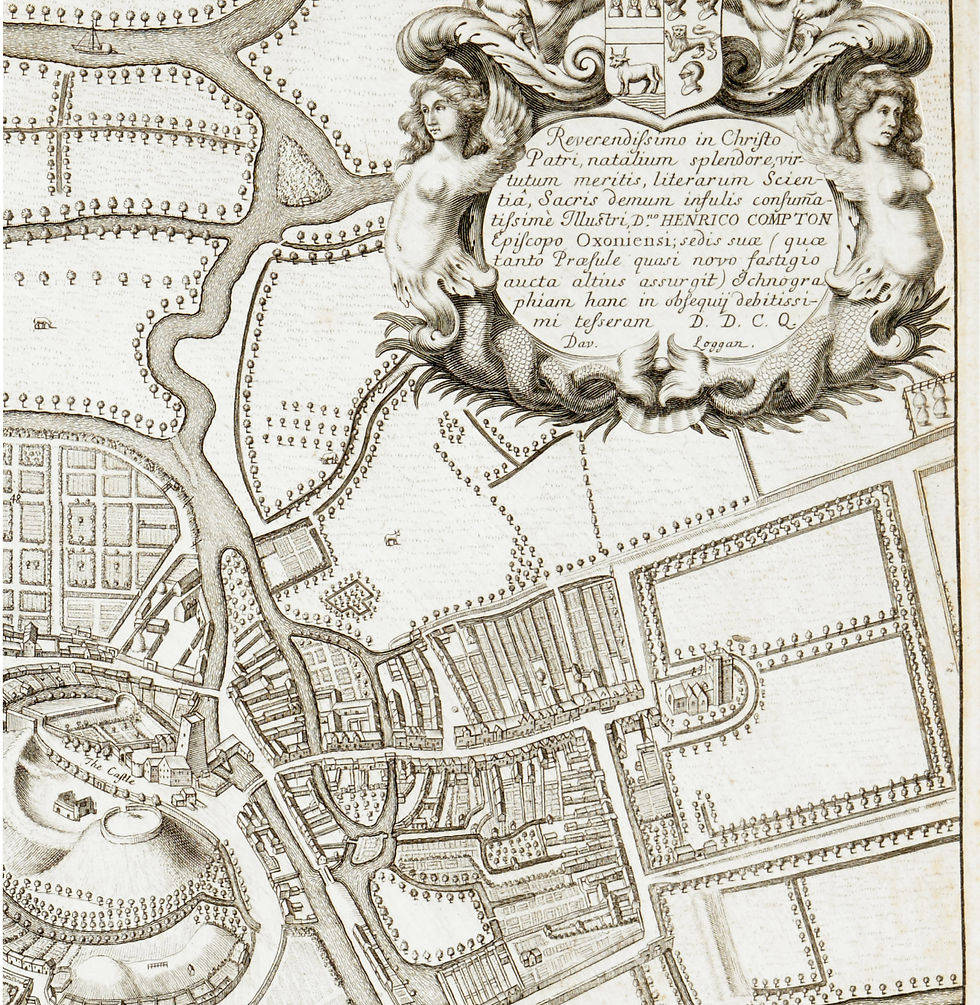Architectural Part II Assistant / London

OXONIA ILLUSTRATA
Oxonia Illustrata is a pre-modern ideal; colleges tightly bound within the fortifications moments before the university’s extra-mural expansion. Loggan’s draws quad, garden, river and countryside in a natural equilibrium perfectly maintained by today’s heritage industry. Far from being a long lost condition of the pre-modern age, the image is central to Oxford’s contemporary global brand. The colleges and quads remain immaculately preserved. Bowler hats and neat lawns choreograph the scene. Newcomers since Loggan have tuned types and tropes towards modernity but the basic relationship between architecture and landscape matches Loggan’s early enclosures. Only recently did Stirling and Jacobsen direct their spaces outwards. Oxford University is not a city. Oxford will never reveal an urban heart, least of a Roman one. Even Nolli cannot help. Oxford is a landscape structure.
Outside the university’s collegiate core, an almost invisible periphery has grown up of industry, infrastructure and the residential suburbs that support them. The railways that penetrated and connected the city centres of the industrial ages bypassed Oxford, forming a new city wall. The Common Quad takes the university across the tracks for the first time, just as the University breached the wall three centuries ago. River and railway pass through the quad and the station is now within not without. The Common Quad is a garden that welcomes all the elements that were once excluded, starting with Castle mound, in which the college was invented and including river, railway station, housing, allotments, commerce, leisure… As the Common Quad extends beyond Loggan’s map we do not know where it ends. But we can start a more Epicurean university of the garden in which everyone is invited to walk across the grass and sit down under a tree.
(Written by Studio 2 tutors, Tom Emerson and Stephanie Macdonald, 6a)

Studio 2 quadrant for Architecture Foundation 2016 brief

